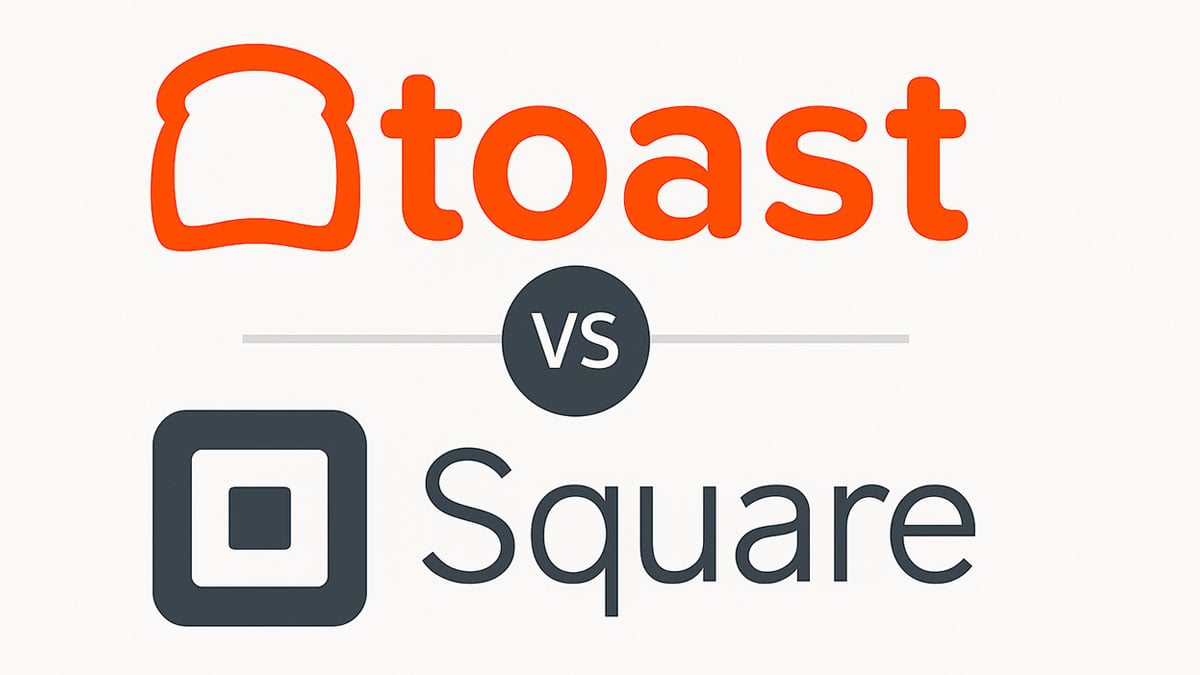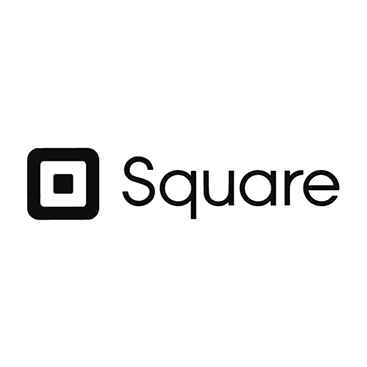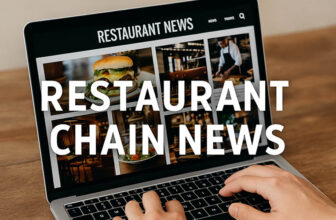
Updated as of: October, 2025 • ⏱️ Estimated Read Time: 7 minutes
Choosing between Toast and Square for your restaurant or small business? You’re not alone in this decision. After researching both systems extensively and diving into real user feedback from platforms like Capterra and G2, I’ve found that while both are solid choices, they serve distinctly different business needs.
Here’s the reality: Toast dominates with a 4.5/5 star rating on G2 based on 198 reviews and ranks #1 for restaurant POS systems, but that doesn’t automatically make it right for every food business. Meanwhile, Square’s generous free plan and 93% user satisfaction rating make it incredibly appealing for startups and smaller operations.
Let me cut through the marketing noise and give you the straight facts about when each system actually makes sense.
Table of Contents
- 1 Bottom Line: Who Wins What
- 2 At-a-Glance Comparison
- 3 The Reality Check: What Users Actually Say
- 4 Head-to-Head: Where Each System Dominates
- 5 Hardware Comparison: Built for Different Environments
- 6 When Toast Makes Sense
- 7 When Square Makes Sense
- 8 The Honest Verdict
- 9 Final Specifications Comparison
- 10 Frequently Asked Questions: Toast vs Square
- 10.1 Which is better for a new restaurant startup?
- 10.2 Can I switch from Square to Toast (or vice versa) later?
- 10.3 Are there any hidden fees I should know about?
- 10.4 Which works better for food trucks and mobile businesses?
- 10.5 How do processing fees really compare in practice?
- 10.6 What about offline functionality when internet goes down?
- 10.7 Which is better for multi-location restaurant businesses?
Bottom Line: Who Wins What
Toast wins for: Full-service restaurants, multi-location operations, businesses needing advanced kitchen workflow management
Square wins for: Quick-service restaurants, food trucks, cafes, new businesses with tight budgets, multi-industry operations
It’s a tie for: Basic payment processing, ease of use, mobile capabilities
At-a-Glance Comparison
Toast | Square | ||
|---|---|---|---|
| Read Full Toast Review | Read Full Square Review | ||
| 9.5/10 (Expert Score) Product is rated as #1 in category Restaurant POS Systems | 9/10 (Expert Score) Product is rated as #2 in category Retail POS Systems | ||
| Pricing | Free $69/mo | Pricing | Free $29+/mo |
| Customer service | 24/7 | Customer service | 6 AM to 6 PM (PST) |
| Free trial | No | Free trial | Yes |
| Best For | Full-service restaurants | Best For | Small businesses, quick-service |
| Restaurant Focus | Restaurant-only | Restaurant Features | Basic restaurant tools |
The Reality Check: What Users Actually Say
After digging through hundreds of verified reviews, here’s what real users are experiencing:
Toast: The Restaurant Specialist
One user described Toast as “incredibly intuitive, exceptional, and integrating multiple operational features, and report options, and has what seems to be the most contemporary, up-to-date, speed, and feature combination”. But that sophistication comes with trade-offs.
What Toast users love:
- Advanced analytics features providing deeper insights into sales trends, customer preferences, and staff performance
- Multiple viewing options including Open View for quick-service and Focus View for full-service restaurants
- Ingredient-level inventory tracking and automated menu item syncing across locations
- Android-based hardware that can survive spills, drops, and restaurant mishaps
What frustrates them:
- “The only thing I have disliked in the entire process is the transitional and installation process… there was very limited support in the first few days of business”
- “They will say and do anything to make the sale after that you’re on your own”
- Data backup limitations requiring manual updates of important information
- Requires a two-year contract with early termination fees
Square: The Versatile Starter
Users consistently praise Square’s ease of use: “You don’t need experience with a POS system to gain an understanding of Square’s platform quickly”. It’s designed for simplicity, which has both benefits and limitations.
What Square users appreciate:
- 96% of users praised its flexible, mobile interface with clean design
- Impressive payment options including QR codes and seamless BNPL integration
- No long-term contracts or termination fees
- Surprisingly full-featured free plan for new businesses
Where they hit walls:
- Account suspensions and money being frozen, particularly for large transactions
- Per-transaction fees becoming costly for high-volume businesses
- Limited customer support options relying primarily on email and online forums
- Limited reporting and inventory management compared to specialized systems
Head-to-Head: Where Each System Dominates
Pricing & True Costs
Here’s where things get interesting. While both offer “free” plans, the reality is more nuanced.
Square’s advantage: Truly functional free plan with no monthly fees, plus transparent processing rates. You know exactly what you’ll pay: 2.6% + 15¢ for in-person transactions.
Toast’s complexity: Toast’s payment processing rates can vary by customer and circumstance, making it harder to predict costs. Their add-ons can make the software expensive, and it’s challenging to get accurate processing fee estimates.
For a small cafe processing $3,000 monthly:
- Square: ~$82.50 in processing fees + $0 software = $82.50 total
- Toast: ~$90 in processing fees + $69 software = $159 total
💡 Pro tip: Test Square’s free plan first to validate your concept, then sign up here. If you need advanced features later, explore Toast’s options.
Restaurant-Specific Features
This is where Toast’s specialization shines. Toast offers features more robust and designed to meet the heavier demands of larger and more complex food businesses.
Toast wins with:
- Kitchen display systems and advanced menu course management
- Automated tip-sharing capability for servers
- Self-ordering kiosks for customer customization
- Advanced inventory management with food waste tracking
Square’s approach: Square provides many essential, basic features included at no extra charge, but for more advanced inventory features like tracking food waste, you’ll need third-party integrations.
Hardware Comparison: Built for Different Environments
The hardware story reveals each company’s priorities and target markets clearly.
Toast Hardware: Restaurant-Grade Durability
 Toast Flex |  Toast Go 2 |
|---|---|
 Toast Flex for Guests |  Toast Kiosk |
 Toast Flex for Kitchen | |
| View Toast Hardware Options → | |
Toast’s Android-based hardware can survive spills, drops, and most restaurant mishaps. The Toast Go 2 handheld can fit in large pockets, has an all-day battery, and works well in outdoor light – exactly what servers need during busy shifts.
Square Hardware: Flexible and Affordable
 Square Register |  Square Terminal |
|---|---|
 Square Kiosk |  Square Stand |
 Square Reader for Contactless Payments |  Square Reader for Magstripe |
| See Square Hardware Options → | |
Square’s approach prioritizes flexibility – you can keep hardware costs down if you already own an iPad, and Square offers Tap to Pay on iPhone, letting merchants accept payments using only a regular iPhone. But if your customers prefer contactless payments, you might not need hardware at all.
Customer Support Reality
Support quality varies significantly between the two systems.
Toast promises more but delivery varies: Toast offers 24/7 customer support for all plans, but customers have complained that wait times have increased significantly and customer service has been less than helpful.
Square’s limited but honest approach: Square has limited customer service hours (6 AM to 6 PM PST) and spotty customer service record, but the free plan doesn’t come with 24/7 phone support – they’re upfront about limitations.
When Toast Makes Sense
Toast shines when you need restaurant-specific depth over general flexibility:
- Full-service restaurants with complex menu management and kitchen workflow needs
- Multi-location operations requiring centralized reporting and menu syncing
- High-volume establishments where advanced analytics and food cost controls justify the higher price
- Businesses planning to scale within the restaurant industry specifically
As one user noted: “Toast is the best. It is constantly improving. Very user friendly. Very flexible to suit your way your business works. Excellent customer support. But comes with a price.”
Ready for restaurant-specific features? Get Toast’s free demo →
When Square Makes Sense
Square works best when you prioritize flexibility and cost control:
- New businesses testing concepts without long-term commitments
- Quick-service operations like cafes, food trucks, or counter-service restaurants
- Multi-industry businesses that need retail and restaurant capabilities
- Cost-conscious operators who can work with basic features initially
One Square user summarized it well: “This is an incredibly simple system that can be implemented in any restaurant or bar, and for the most part is reliable enough to get the job done.”
Want to start simple and scale? Try Square’s free plan →
The Honest Verdict
After examining real user experiences and operational needs, here’s my take:
Choose Toast if: You’re running a serious restaurant operation that needs industry-specific tools and you’re willing to pay for specialized functionality. The learning curve and costs are worth it for complex operations.
Choose Square if: You want to start simple and scale gradually, need multi-industry capabilities, or prioritize cost control and flexibility over specialized features.
Consider alternatives if: Neither system fits your specific needs. For complex inventory management, you might need more specialized solutions.
Our Final Recommendation
New to POS systems? Start with Square’s free plan to learn the basics risk-free.
Serious about restaurant growth? Invest in Toast’s restaurant-specific features from day one.
The choice ultimately comes down to your current needs versus future ambitions. Square gets you started quickly and affordably. Toast positions you for restaurant-specific growth but requires upfront commitment. Choose based on where your business is today, not where you hope it might be someday.
Final Specifications Comparison
| Specification | Toast | Square |
|---|---|---|
| Target Business Size | Small to large restaurants | Small to medium businesses |
| Industry Focus | Restaurants exclusively | Multi-industry |
| Free Trial | Demo available | Full free plan |
| Third-party Processing | In-house only | In-house only |
| Offline Mode | Yes (with backup router cost) | Yes (included) |
| Integration Count | 120+ restaurant-focused | 30+ general business |
Frequently Asked Questions: Toast vs Square
Which is better for a new restaurant startup?
For new restaurants, Square typically makes more sense initially. You can start with their completely free plan to test your concept without any monthly fees or long-term contracts. As one user noted, Square’s “simple POS for small shops enabled us to add a POS to replace our old cash register for the minimum expense.” Toast requires a 2-year contract and monthly fees from the start, which can be risky when you’re still validating your business model. Start with Square’s free plan, then evaluate if you need Toast’s advanced features once you’re established.
Can I switch from Square to Toast (or vice versa) later?
Toast to Square: More complex due to Toast’s contract requirements and potential early termination fees. Some users report difficulty getting out of Toast contracts even when dissatisfied with service. Plan your choice carefully – switching POS systems always involves staff retraining, data migration, and potential downtime.
Toast hidden costs: Setup fees for hardware configuration, backup router costs for offline mode functionality, early termination fees if you break the 2-year contract, and processing rates that “fluctuate based on transaction volume” making budgeting difficult.
Square potential extras: Hardware purchases (though you can use existing iPads), higher fees for manually entered transactions (3.5% + 15¢), and premium feature add-ons for larger businesses. Square is more upfront about their fee structure, while Toast’s variable processing rates can make cost prediction challenging.
Which works better for food trucks and mobile businesses?
Square’s mobile strengths: Works on both iOS and Android devices you might already own, Tap to Pay on iPhone – accept payments with just your phone, no monthly fees with the free plan, and offline mode included at no extra cost.
Toast’s limitations for mobile: Android-only hardware requirements, monthly fees even for basic functionality, hardware designed more for fixed restaurant locations, and contract commitment that might not suit seasonal operations. For food trucks and pop-up operations, Square’s flexibility and no-contract approach typically works better.
How do processing fees really compare in practice?
Square’s predictable structure: In-person: 2.6% + 15¢ (recently increased from 10¢), Online: 2.9% + 30¢, Manual entry: 3.5% + 15¢.
Toast’s variable approach: Starts at 2.49% + $0.15 but “fluctuates based on transaction volume.” Some users report getting better rates with higher volume, while others find the unpredictability challenging for budgeting.
Real-world example: A cafe processing $5,000 monthly might pay $145 with Square vs. $140-160 with Toast (depending on their negotiated rate). The difference often matters less than the predictability.
What about offline functionality when internet goes down?
Square: Offline mode included free. The system stores transactions locally and syncs when connection returns. Users report it “works well for basic payment processing during outages.”
Toast: Offline capability exists but requires additional backup router hardware (extra cost). More robust offline features but comes with additional expense and setup complexity. For most small businesses, Square’s included offline mode provides adequate protection against connectivity issues without extra costs.
Which is better for multi-location restaurant businesses?
Toast’s multi-location advantages: Centralized reporting across all locations, automated menu item syncing across locations and ordering platforms, advanced analytics comparing location performance, and restaurant-specific features like inventory management and food waste tracking.
Square’s limitations: While Square supports multiple locations, it lacks the sophisticated centralized management tools that restaurant chains need. Better suited for businesses where each location operates somewhat independently. As one Toast user noted: “Toast is the best for multi-location management, but comes with a price.” The investment often pays off for serious restaurant operations.
Both systems continue evolving rapidly, so verify current features and pricing directly with each provider before making your final decision.








